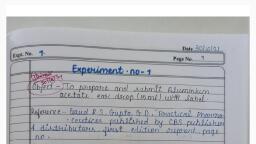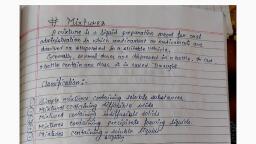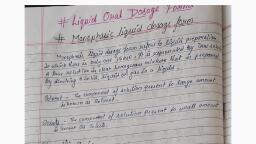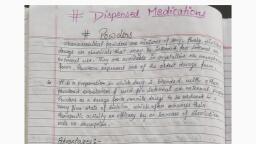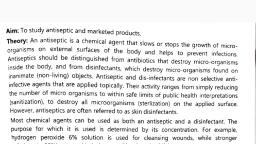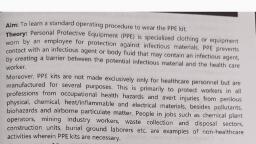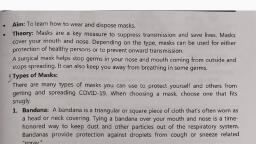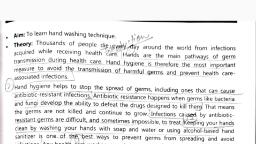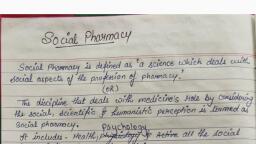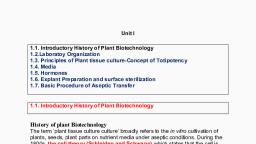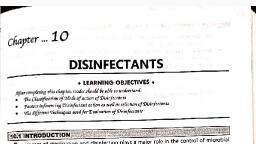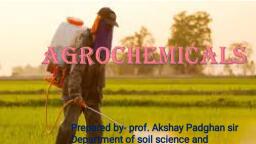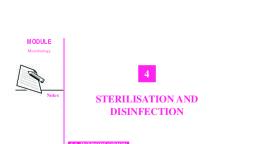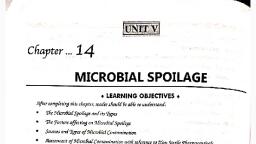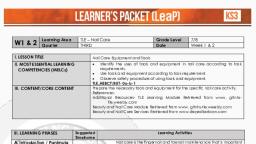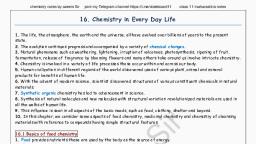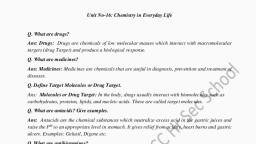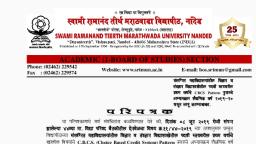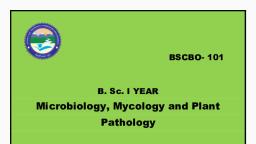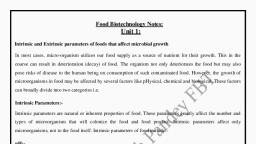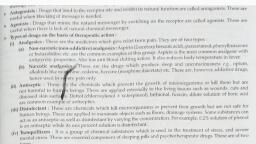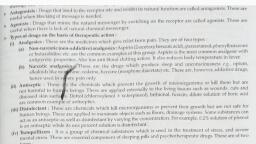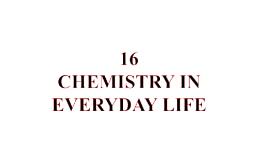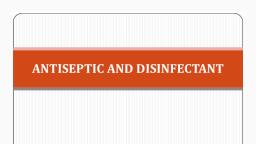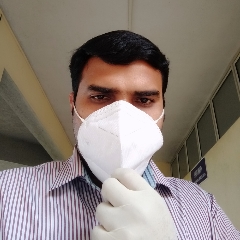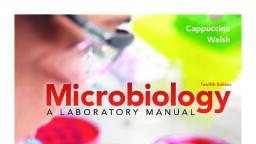Page 1 :
Theory: Disinfection is a process in which chemical or physical means is used to, workers and the environment, control or destroy the microorganisms that are capable of causing diseases. There, disinfectants are non-specific in their action and will act against a spectrum of, Aim: To study different types of disinfectant and marketed prepration., are three levels of disinfection (i.e. high, intermediate and low level) with respect to, the effectiveness of the disinfection. Disinfecting agents are substances used to, including absorption through skin or mucous membrane, inhalation and ingestion., chemical disinfectants would be effective and safe tools when handled properly with, Sometimes a chemical substance can enter through various routes. However,, substances, the chemical disinfectants can enter the body through several routes,, the safety measures in place. If misused, they can be hazardous and harmful to, meal or destroy the microorganisms that are capable of causing diseases. There, entrol or destroy harmful microorganisms such as bacteria, viruses, or fungi. Many, microorganisms., Chemical disinfectants can be grouped in accordance with their chemical properties., They work on various modes of action to destroy the microorganisms such as by, rupturing the cell wall, denaturing proteins or lipids, oxidation, alkylation, etc. The, efficacy of a disinfectant hinges on various factors including concentration, contact, duration, temperature, pH, the presence of organic matters and metal ions., Choice of the disinfectant to be used depends on the particular situations. Some of, the disinfectants are adopted because of the wide spectrum of destroying, microorganisms in order to achieve effective disinfections. Others destroy a smaller, range of disease causing organisms but are preferred because the chemical, disinfectants are less or non-toxic to human and the level of disinfections required is, low., There are disinfectants which possess surfactant effect and are used to clean and, disinfect in "one-step" process. Workers in hospitals, health care facilities, poultry, facilities, abattoirs, food products manufacturing plants, sanitary and similar, services, etc. frequently use chemical disinfectants to destroy diseases causing, microorganisms. Some of the chemical disinfectants are flammable and explosive., There are disinfectants that would react with incompatible chemicals violently and, generate toxic gases posing hazards to workers. All chemical disinfectants are, by, very nature, potentially harmful or toxic to living organisms. Like other toxic, their, Suostances, the chemical disinfectants can enter the body through several routes,, iciuding absorption through skin or mucous membrane, inhalation and ingestion., diemical disinfectants would be effective and safe tools when handled properly with, - 63 -, Scanned by TapScanner
Page 2 :
microorganisms. The classes are as follows:, bacteria and enveloped viruses. Alcohols are not effective against bacterial spores, Disinfectants can be divided into classes on the basis of their chemical compositions, and each class has its characteristics, hazards, toxicities and efficacy against various, Sociar, Alcohols: Alcohols, usually in the form of 70% isopropyl alcohol or 60 to 80%, PiaclicaI ManuaI, microorganisms. The classes are as follows:, thyl alcohol, are commonly used topical disinfectants. They are effective against, hacteria and enveloped viruses. Alcohols are not effective against bacterial spores, and non-enveloped viruses. Alcohols are somewhat slow in their germicidal, action., Aldehydes: Aldehydes are broad-spectrum disinfectants. The most commonly, used agents are formaldehyde and gluteraldehyde. Aldehydes are very effective, against bacteria, fungi, viruses, mycobacteria and bacterial spores., Chlorine Compounds: Chlorine compounds are considered broad spectrum,, being effective against bacteria, enveloped and non-enveloped viruses,, mycobacteria and fungi. At high concentrations, chlorine compounds can be, sporicidal. The most commonly used agents are chlorine dioxide, sodium, hypochlorite (Chlorine Bleach) and calcium hypochlorite., . Iodine Compounds: Iodine compounds are broad spectrum and considered, effective for a variety of bacteria, mycobacteria, fungi and viruses. Tincture of, jodine could be used as an antiseptic for skin cuts and scrapes. Iodine agents are, inactivated by quaternary ammonium compounds and organic debris. An, iodophor is a combination of iodine and a solubilizing agent or carrier; the, resulting complex provides a sustained-release reservoir of iodine and releases, small amounts of free iodine in aqueous solution to kill microbes., o Phenolics: The disinfectants are phenol (carbolic acid) derivatives. They have a, characteristic pine-tar odour and turn milky in water. Phenols at 5%, concentration are considered bactericidal, tuberculocidal, fungicidal and virucidal, for enveloped viruses. They retain more activity in the presence of organic, chlorine-containing, material, than, iodine, or, disinfectants., Cresols,, hexachlorophene, alkyl- and chloro- derivatives and diphenyls are more active, than phenol itself., o Quaternary Ammonium Compounds: Quaternary ammonium compounds, such, as benzalkonium chloride, are generally odourless, colourless, non-irritating, and, deodorizing. The compounds have disinfectant effect and some have detergent, action. However, some quaternary ammonium compounds are inactivated in the, presence of some soaps or soap residues. Their antibacterial activity is reduced in, the presence of organic material. Quaternary ammonium compounds are, effective against bacteria but only and somewhat effective against fungi and, viruses., - 65 -, Scanned by TapScanner
Page 3 :
o Oxidizing Agents: Common oxidizing agents are hydrogen peroxide, ozone, peracetic acid and potassium permanganate. The hydrogen peroxide used as an, antiseptic, is also effective in disinfection of inanimate objects. It could be, sporicidal if operated at high temperatures. Peracetic acid is one of the effective, liquid sporicides and is used widely in disinfection of food processing equipment, and medical instruments because it does not leave toxic residues, Potassium permanganate has broad antimicrobial properties. It is an effective, algicide (0.01%) and virucide (1%) for disinfection, but tends to irritate tissues at, concentrations > 1:10,000., Others: Ethylene oxide has wide use as an disinfecting agent with very broad, biocide activity against microorganisms including bacterial spores and viruses. It, is a highly flammable chemical. It is toxic, mutagenic and carcinogenic., Chlorhexidine is a biguanide compound, one of the widely used disinfectants. It is, effective against most bacteria and is non-irritating to tissues. Biguanide has a, mutbo broad antibacterial spectrum, however it is limited in its effectiveness against, viruses and is not sporicidal, mycobactericidal, or fungicidal. noirdbogyr, ben, rogmo, mo snibol, Scanned by TapScanner
Page 4 :
Table: Chemical Disinfectants, Sr. No., Chemical disinfectant, Brand name, 1., Lizol disinfectant surface &, floor cleaner liquid, floral -, Benzalkonium chloride, 5 L, 2., Chlorhexidine based hand sanitizer, Resist +, Ultra-Pure Hydrogen Peroxide 3%, Durox LR3 -, Black Phenyl surface disinfectant, floor cleaner Gainda, liquid for hospitals, homes, offices removes, dirt, grime & kills, Iodine based disinfectant,, Idophor (iodophor), Sodium hypochlorite 5% solution 1 Lt, SLCHEM, Disinfectant 2.4% w/v Glutaraldehyde, Cidex dialdehyde solution, 8., 75% Isopropyl alcohol-based hand rub SterloMax, sanitizer., Scanned by TapScanner, 3., 4., 5., 6., 7.

